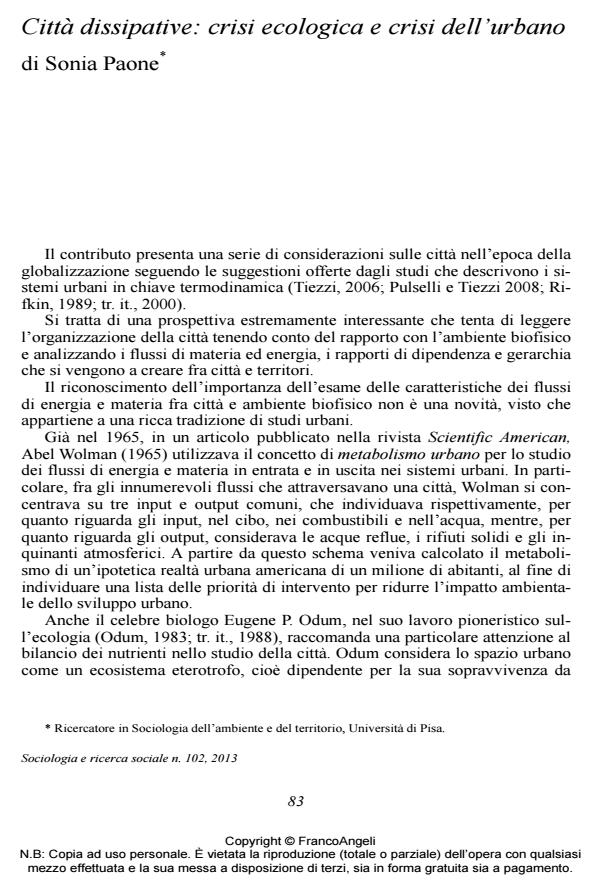Dissipative cities: Ecological Crisis and Urban Crisis
Journal title SOCIOLOGIA E RICERCA SOCIALE
Author/s Sonia Paone
Publishing Year 2014 Issue 2013/102
Language Italian Pages 12 P. 83-94 File size 497 KB
DOI 10.3280/SR2013-102006
DOI is like a bar code for intellectual property: to have more infomation
click here
Below, you can see the article first page
If you want to buy this article in PDF format, you can do it, following the instructions to buy download credits

FrancoAngeli is member of Publishers International Linking Association, Inc (PILA), a not-for-profit association which run the CrossRef service enabling links to and from online scholarly content.
The essay describes the relationship between ecological crisis and urban development, as analyzed by studies that describe urban systems using a thermodynamic perspective. The concept of city will be analyzed as a «dissipative structure» - an open system that discharges disorder outside in order to maintain internal order - and as an «incomplete ecosystem» - a system that can only function correctly over time if it draws on natural resources from external territories, which are therefore dominated and exploited. This perspective allows us to highlight the complex links between environmental issues and the organization and functioning of cities in a global context.
Sonia Paone, Città dissipative: crisi ecologica e crisi dell’urbano in "SOCIOLOGIA E RICERCA SOCIALE " 102/2013, pp 83-94, DOI: 10.3280/SR2013-102006